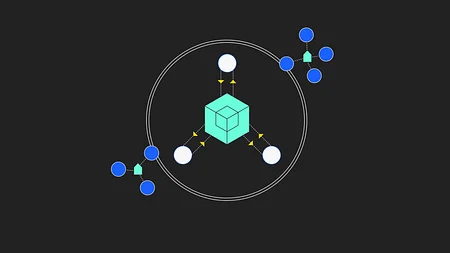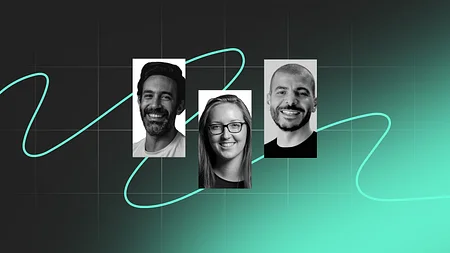Financial exclusion and the gender gap in the Middle East

A few weeks ago, we wrote an article about migrant workers in the Middle East and their access to financial services. We can’t continue the conversation about regional financial exclusion without talking about the gender gap.
Across the globe, women have fewer bank accounts than men. In the Middle East and North Africa, that gap is larger than anywhere else in the world. The social and economic consequences of gender inequality have been extensively studied, leaving no doubt that the financial inclusion of women greatly benefits society as a whole.
It’s important to note that the Middle East is a big, diverse place and things look very different from one country to another. So in this article, we’re going to focus on Saudi Arabia, Egypt, and the United Arab Emirates (UAE).
What’s the state of play?
The most commonly cited reason for not owning a bank account in the Middle East is by far a lack of access to funds (41%). Although religious reasons only account for 12%, people in the Middle East are more likely to consider culture and religion in their banking decisions than anywhere else in the world. This undoubtedly feeds into the gender gap. Social and cultural norms have traditionally accounted for a large banking gender gap in the Middle East but in the UAE and Saudi things are changing. A lot.
In the last few years, we’ve seen a tightening of that gap. In the UAE, women have actually overtaken men in account ownership. 86% of women own bank accounts today - in 2011, that figure was 47%.
In the last 10 years alone in Saudi Arabia, account ownership among women jumped from around 15% to 63.5% - a huge shift. The truth is that women in the region are demanding a seat at the table. Labour participation rates have doubled since 1990 and there are more tech entrepreneurs in Saudi than in Europe (think about the potential fintech opportunity of catering to all these female entrepreneurs!)
The truth is that women in the region are demanding a seat at the table.
In Egypt, the story is a little different. Account ownership rates are decreasing and over 23m Egyptian women remain excluded from the financial services ecosystem. Moreover, the country is experiencing some of the lowest financial literacy rates in the region. But there’s hope as the government pushes legislation and regulatory changes to catalyse financial services innovation.
What does the future look like?
We need to keep this regional momentum going. Ensuring women are well served and fully integrated into the financial ecosystem is absolutely vital and makes perfect business and economic sense. Here’s where fintech comes in.
Fintech can play a major role in closing the gap even further, but so far no one is really capitalising on that opportunity. In a study of 400 fintechs in the region, only 2% mention women in their mission statements.
While women don’t necessarily need to have differentiated financial products, the ways different fintechs market these products and onboard women needs more than a little rethink (this is, of course, true across the globe). Studies show that it’s more effective to use referrals, gender-centric language and behaviourally-informed messaging when onboarding women.
So how can fintechs ensure they are catering to women?
Easy! It starts with having women on your team. Ziina, a UAE-based P2P payments fintech (whose entire product team is made of women) makes a conscious effort to include women in their marketing by leveraging authentic storytelling. Ziina founder Sarah Toukan noted that having a women-led team resulted in a genuine female point of view that “permeated all aspects of the business”. The start-up now has a committed workstream dedicated to onboarding female-led businesses to their ‘Ziina for Business’ product. No wonder 40% of their user base is female.
The cultural nuances of the region mean that more consideration of the female user journey can go a long way. For example, most financial service agents are male, meaning UX for women is often an afterthought in some regions. In Egypt, the payment provider Fawry appointed female service agents to address this issue and as a result, female onboarding rates increased. But this came with its fair share of obstacles. Fawry had to identify female service agents, train them (the lower levels of female digital financial literacy made training more difficult), and work through the social norms that discouraged women from taking on such a job. But they did it, and women are better off for it. It is precisely that kind of inclusive consideration we hope to see more fintechs take as they roll out products.
The cultural nuances of the region mean that more consideration of the female user journey can go a long way.
The financial sector in Egypt is largely dominated by microfinancing institutions where 70% of beneficiaries are women. The country’s high digital penetration makes it ripe for fintech disruption. Fintech disruption in this sector could widely improve the financial well-being of women. Kashat is a mobile app that offers nano loans from as little as 100 EGP (around £5 GBP) to 3,000 EGP (around £150 GBP) to help micro business owners - a large portion of whom are women. As of August this year, the company has given out more than 100,000 loans. The opportunity is there for the taking.
The truth is pretty simple
The key to the financial inclusion of women in the Middle East is the same as it is anywhere else in the globe - women need to be part of the teams and major decisions of financial institutions. With its digitally-native, agile and scalable emphasis, fintech is well-placed to lead this change in the Middle East and elsewhere.
Want to navigate the financial services minefield and bring cutting-edge propositions to market? We wrote a handy 'how-to' guide. You can check it out here.
How to build a bank
We've popped our learnings into a handy guide that will help businesses navigate the waters of financial services to successfully create truly digital propositions that customers will love.
Download now



